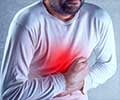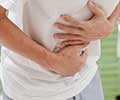Abdominal Pain in Women - Frequently Asked Questions
1. Why do I have belly button pain?Periumbilical pain, or belly button pain, can result from various factors. Minor causes encompass issues like indigestion, constipation, and pregnancy, while more serious reasons include conditions like gallstones, appendicitis, or pancreatitis. The severity of belly button pain can vary from mild to intense.
2. What is epigastric pain?
Epigastric pain is discomfort felt in the upper central abdomen, situated below the ribs. Potential triggers for this pain include indigestion, gastritis, or other gastrointestinal issues.
3. Why does my stomach hurt when I cough?
If you feel abdominal pain when coughing excessively, your intuition is likely correct. Intense coughing, even during a brief episode of the common cold, can strain and overuse stomach muscles, leading to soreness in the abdomen and making activities like coughing, sneezing, or laughing particularly uncomfortable. Pain in the lower abdomen when coughing in females could be due to gynecological issues or muscular strain
4. What causes a rigid abdomen?
Various factors contribute to abdominal rigidity, including appendicitis, issues with pelvic organs, constipation, gastric cancer, and chronic digestive conditions. Additionally, causes may involve abdominal abscesses, cholecystitis, hormonal changes, chronic stress, or other conditions that result in a hard stomach.
5. Why does my stomach hurt when I wake up?
Morning stomach pain is typically not a cause for concern. Common reasons for morning stomach discomfort include indigestion, irritable bowel syndrome (IBS), inflammatory bowel disease (IBD), constipation, and peptic ulcers. If the pain persists, worsens, or if you experience additional troubling symptoms, it is advisable to seek medical attention.
6. What causes a burning sensation in the lower abdomen in females?
A burning sensation in the lower abdomen can be attributed to various factors, including urological, digestive, or reproductive issues such as ulcers, kidney stones, and endometriosis. Peptic ulcers, GERD, and chronic pancreatitis may also cause persistent burning pain. Kidney stones, UTIs, sexually-transmitted infections, and vaginal infections are potential culprits. Additional causes encompass constipation, irritable bowel syndrome, and urinary tract infections. Seek medical attention if the burning sensation is accompanied by a fever, skin swelling or warmth, and painful glands.
7. What causes abdominal cramps (ab cramp)?
Abdominal cramps can stem from various sources, with less serious causes including constipation, irritable bowel syndrome, food allergies, lactose intolerance, food poisoning, and stomach viruses. More serious factors may involve appendicitis, abdominal aortic aneurysm, bowel blockage, cancer, and gastroesophageal reflux. Organ-related causes include period pain, kidney stones, urinary tract infections, pelvic inflammatory disease, and heart problems. Muscle-related causes may result from overworking abdominal muscles during exercises, leading to muscle spasms.
8. What does pain in the female pelvic area indicate?
Pelvic pain can arise from diverse causes, encompassing urinary tract infections, gastrointestinal issues, reproductive system infections, and organ-related problems. Conditions like appendicitis, irritable bowel syndrome, mittelschmerz (painful ovulation), PMS, menstrual cramps, ectopic pregnancy, pelvic inflammatory disease, and twisted or ruptured ovarian cysts can contribute to pelvic pain. Seek medical attention for acute pelvic pain.
9. What causes left-side abdominal pain in females?
Pain on the left side of the abdomen can result from various factors, including gas, pregnancy (stretching during early stages or ligament stretching later on), and conditions like menstrual cramps, ovarian cysts, endometriosis, ectopic pregnancy, and pelvic inflammatory disease. Other potential causes encompass inflammatory bowel disease, hernia, gastroesophageal reflux disease (GERD), and constipation. Left-side pain during pregnancy can be attributed to factors like ligament stretching, gastrointestinal changes, or reproductive organ adjustments.
10. What could be the cause of lower abdominal pain after a bowel movement in females?
Lower abdominal pain experienced by women during a bowel movement, or while walking, sitting, or lying in specific positions, could be attributed to pelvic adhesions. These occur when organs in the pelvic region, such as the uterus, ovaries, fallopian tubes, or bladder, adhere together due to bands of scar tissue.
11. What are the differential diagnoses for abdominal pain?
Differential diagnoses for abdominal pain include various categories based on the location and nature of the pain. Acute abdominal pain lasting less than seven days may involve issues like appendicitis, diverticulitis, ischemic colitis, cystitis, and urinary tract infection. Specific to the hypogastric region, conditions such as appendicitis, diverticulitis, ureteral stones, ovarian and tubal pathology, and various hernias may be considered. Periumbilical pain differentials include esophagitis, gastritis, peptic ulcer, small bowel mass, or obstruction. Other causes encompass digestive problems, inflammation, female reproductive issues, infections, obstructions, and anatomic abnormalities like malrotation of the gut.
12. What causes lower back and stomach pain in females?
Lower back and stomach pain in women can be caused by various factors, including menstrual pain, endometriosis, pelvic inflammatory disease, fibroids, pregnancy-related back pain, ovarian cysts, adenomyosis, bowel obstruction or perforation, cirrhosis, appendicitis, and stress or worries. Other causes of lower abdominal pain involve premenstrual syndrome (PMS), premenstrual dysmorphic disorder (PMDD), and dysmenorrhea.
13. What causes pain in the groin area in females?
Groin pain in females can stem from different causes, including muscle strain, which is the most common reason for such pain. Injuries or strains, such as pulling, straining, or tearing a groin muscle or ligament, can also be contributing factors. Additionally, a condition often referred to as a "sports hernia," though not an actual hernia, may result from a pulled muscle, tendon, or ligament in the leg and is common in sports like hockey, football, and soccer. It is recommended to consult with a medical professional for information and care.
















